Envelope Sizes
Anish
November 10, 2023
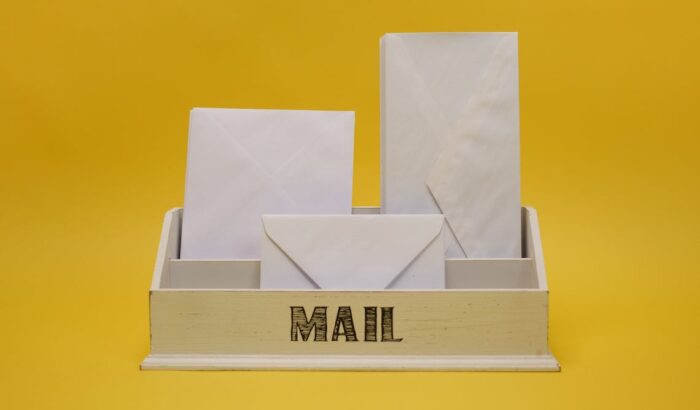
The United States has a relatively strong mailing industry, producing about $1.58 trillion in sales. In 2021, envelope sales and shipments in the United States totaled 128.9 million units valued at $1.96 billion.
These figures show that envelopes are an essential part of the mailing process. Envelopes come in different sizes and serve numerous purposes.
When choosing what envelope to use, consider its size and whether it suits the item or document you want to send.
So, what are the different envelope types and their sizes?
This article explores the different kinds of envelopes and lists the various sizes under each envelope type. This article also discusses the standard envelope size and the envelope you can use for sending international letters.
If you’re ready to send your mail, check out FindPostOffice.org to locate a post office near you. You can also search post offices by state, city, and ZIP code using FindPostOffice.org’s online search tool.
Envelope Size Guide: Envelope Size Table and Description
With so many envelopes in existence, choosing one that fits your requirements can be a daunting task.
Fortunately, this article lists the different envelope types and sizes to help you determine what envelope to use for your specific purpose.
Announcement Envelopes

Announcement envelopes, also called A-style envelopes, contain personal mail and greetings. You can use these envelopes for greeting cards, invitations, personal correspondence, save-the-dates, and notecards.
An announcement envelope’s open side has a deep, square flap that closes lengthwise. These envelopes can have an outer envelope and an inner paper lining with a different texture or color.
The table below compares the different sizes of announcement envelopes:
| Envelope type | Envelope width x height (inches) |
| A2 envelope | 5.750 x 4.375 |
| A6 envelope | 6.50 x 4.75 |
| A7 envelope | 7.25 x 5.25 |
| A8 envelope | 8.125 x 5.500 |
| A10 envelope | 9.5 x 6.0 |
Baronial Envelopes
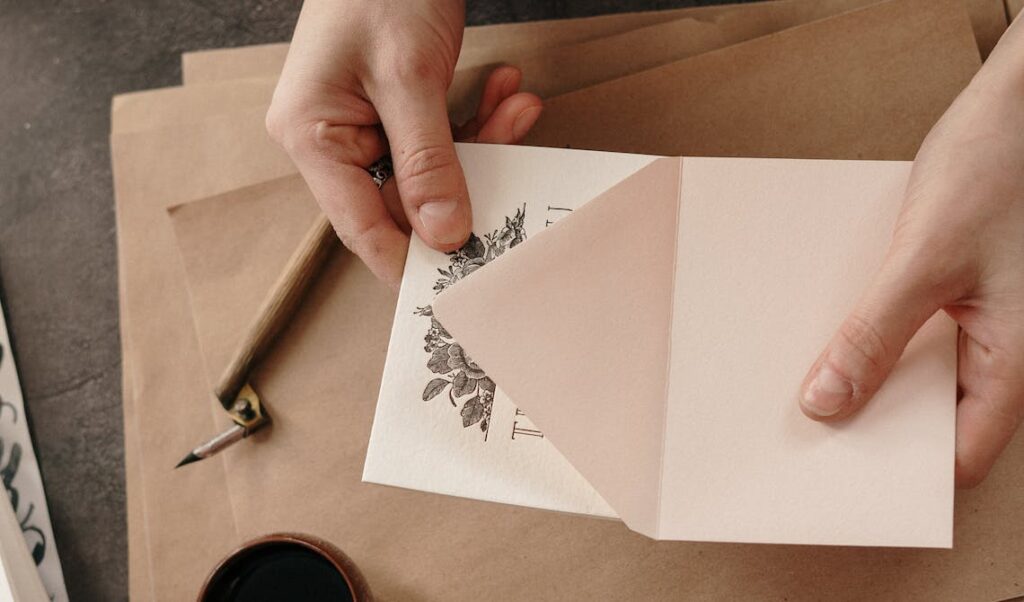
Baronial envelopes function similarly to announcement envelopes since both types can contain personal correspondence and be used for invitations, notecards, greeting cards, and save-the-dates.
The following table shows the baronial envelope size chart:
| Envelope type | Envelope width x height (inches) |
| 4 bar | 5.125 x 3.625 |
| 5 bar | 5.625 x 4.125 |
| 5-1/2 bar | 5.750 x 4.375 |
| 6 bar | 6.50 x 4.75 |
| 7-1/2 bar | 7.5 x 5.5 |
Regular Envelopes
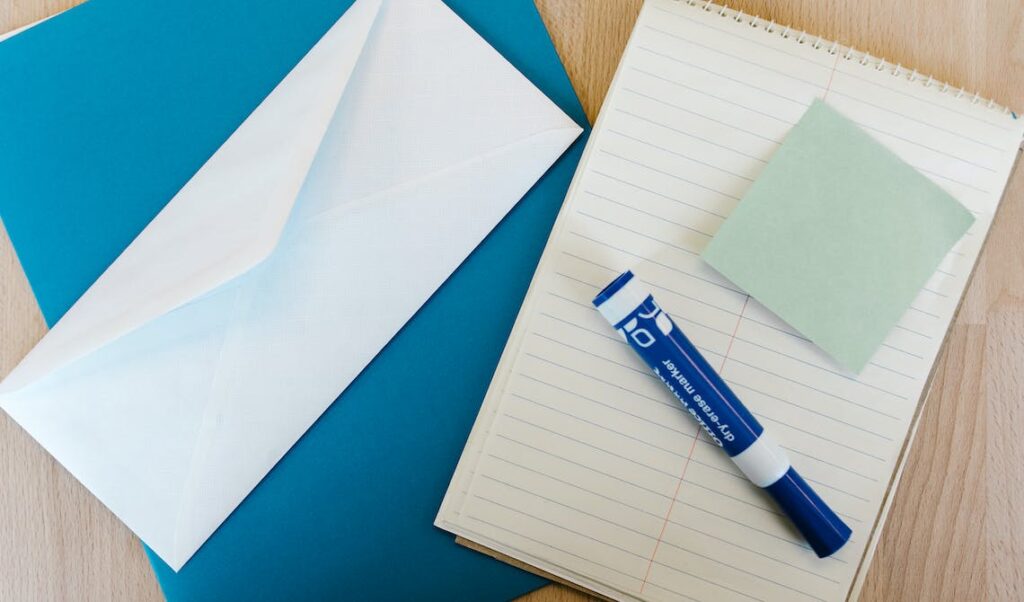
Regular envelopes have standard envelope sizes similar to those you often use for most mailings.
Some popular regular envelope sizes are the #10 envelope, used frequently for business correspondence, and the #9 envelope, often used as a reply envelope for invoices and other business purposes.
Popular regular envelope sizes have the following measurements:
| Envelope type | Envelope width x height (inches) |
| #5 regular envelope | 5.500 x 3.125 |
| #6-1/4 regular envelope | 6.0 x 3.5 |
| #6-3/4 regular envelope | 6.500 x 3.625 |
| #7 regular envelope | 6.75 x 3.75 |
| #7-1/2 regular envelope | 7.5000 x 3.9375 |
| #8-5/8 regular envelope | 8.625 x 3.625 |
| #9 regular envelope | 8.875 x 3.875 |
| #9-5/8 regular envelope | 9.625 x 4.500 |
| #10 regular envelope | 9.500 x 4.125 |
| #11 regular envelope | 4.500 x 10.375 |
Window Envelopes

Window envelopes have at least one opening on the front, allowing you to see part of the contents inside the envelope.
Single-window envelopes have one opening for the mailing address. Double-window envelopes have another opening for the return address.
All-Purpose Window Envelopes
An all-purpose window envelope measures 9.500 inches (in) in width and 4.125in in height. Its window size is 4.5in x 3.0in.
Double-Window Envelopes
Double-window envelopes come in the following sizes:
- 8.750in x 3.625in
- 9.0000in x 4.1875in
Full Face Window Envelopes
Full face envelopes are open on the envelope’s entire front, giving you a full view of the contents inside. These envelopes have the following measurements:
- 9.500in x 4.125in
- 9in x 6in
- 12in x 9in
- 12.5in x 9.5in
Single-Window Envelopes
The sizes of single-window envelopes are as follows:
- #6-3/4 envelope (6.500in x 3.625in)
- #8-5/8 envelope (8.625in x 3.625in)
- #9 envelope (8.875in x 3.875in)
- #10 envelope (9.500in x 4.125in)
- #11 envelope (10.375in x 4.500in)
- #14 envelope (11.5in x 5.0in)
- 9.5in x 4.5in
- 9in x 6in
- 12in x 9in
Square Envelopes
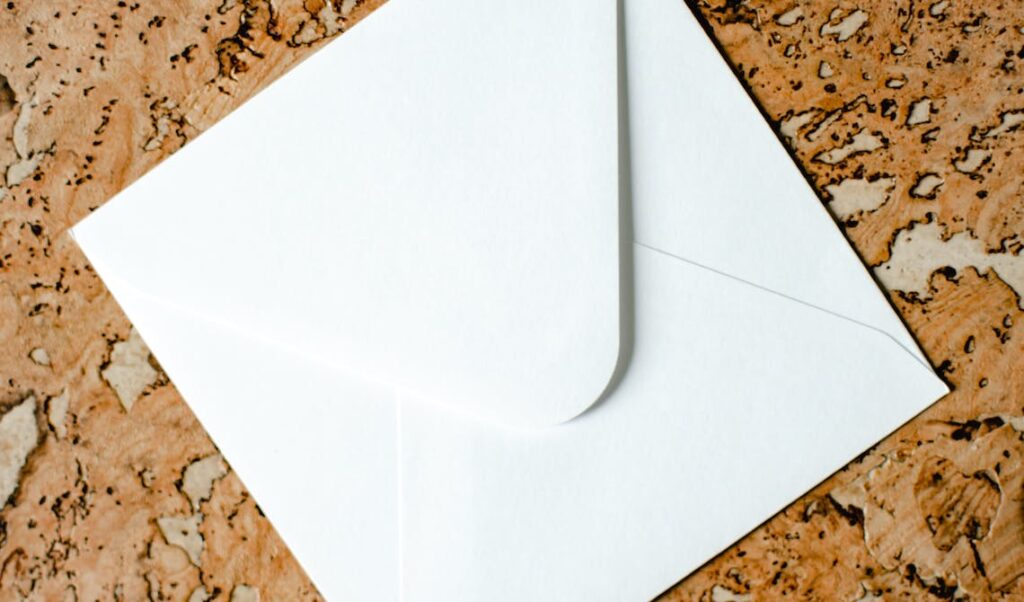
Square envelopes have a symmetrical and square shape. Many of these envelopes have square flaps on the back. A few use triangular contour flaps.
Square envelopes often come in the following sizes:
| Envelope type | Envelope width x height (inches) |
| 5 square | 5 x 5 |
| 5-1/2 square | 5.5 x 5.5 |
| 6 square | 6 x 6 |
| 6-1/2 square | 6.5 x 6.5 |
| 7 square | 7 x 7 |
| 7-1/2 square | 7.5 x 7.5 |
| 8 square | 8 x 8 |
| 8-1/2 square | 8.5 x 8.5 |
| 9 square | 9 x 9 |
| 9-1/2 square | 9.5 x 9.5 |
Booklet Envelopes
You can use a booklet envelope to seal documents without folding them.
The opening flap is on the booklet envelope’s longer side. The envelope uses a sticker or tear closure (part of the envelope you tear to open) for mailing documents or a tie or clasp closure for filing purposes.
Booklet envelopes are usually made of paper, but they can also use cardboard for added rigidity. These envelopes come in the following sizes:
- 9 inches (in) x 6in
- 12in x 9in
- 13in x 10in
Catalog Envelopes
A catalog envelope allows you to seal documents without folding them. When you mail using a catalog envelope, your recipient can receive the documents without creases.
This feature makes these envelopes ideal for sending documents that need to be framed or presented.
Catalog envelopes usually come with insulation, such as bubble wrap, to help protect their contents.
Sizes for catalog envelopes are as follows:
- 6in x 9in
- 9in x 12in
- 10in x 13in
Remittance Envelopes
Remittance envelopes are typically used for mail orders, subscriptions, coupons, and other remittance needs. You can also use these envelopes as collection envelopes for donations in churches, charities, and schools.
The following table shows the different remittance envelope sizes:
| Envelope type | Envelope width x height (inches) |
| #6-1/4 remittance envelope | 6.25 x 3.50 |
| #6-3/4 remittance envelope | 6.500 x 3.625 |
| #9 remittance envelope | 8.875 x 3.875 |
Coin Envelopes
Although digital payment methods are widely available, coins and paper money are still commonly used in society.
Coin envelopes are made of heavy-duty paper to ensure they can hold numerous coins without tearing under the weight.
Coin envelopes are available in the following sizes:
| Envelope type | Envelope width x height (inches) |
| #00 envelope | 1.6875 x 2.7500 |
| #1A envelope | 2.25 x 3.50 |
| #2AA envelope | 2.5 x 3.5 |
| #3B envelope | 2.50 x 4.25 |
| #4-1/2D envelope | 3.000 x 4.875 |
| #4-1/4D envelope | 3.000 x 4.875 |
| #4C envelope | 3.0 x 4.5 |
| #5-1/2F envelope | 3.125 x 5.500 |
| #5E envelope | 2.875 x 5.250 |
| #6G envelope | 3.375 x 6.000 |
| #7H envelope | 3.5 x 6.5 |
Specialty Envelopes
Specialty envelopes help you achieve goals that common standard envelopes may not meet. There may be times when a standard envelope size works well, but you may prefer using an alternative envelope design that can better suit your purposes.
The following table lists the various specialty envelopes, their sizes, and their common uses:
| Envelope type | Envelope width x height (inches) | Common use |
| Bank deposit envelope | 3.50 x 73.25 x 73.75 x 7 | For checks, cash, and other documents |
| Tax form envelope | Varies | For displaying addresses on tax forms |
| Offering envelope | 6.250 x 3.125 | For fundraising, churches, charity, and any form of money collection |
| Money gift envelope | 6.3125 x 2.7500 | For birthdays, holidays, and graduations |
| Jewelry envelope | 3.125 x 5.5003.625 x 6.000 | For jewelry and parking tickets |
| Door hanger envelope | 4.50 x 10.25 | For invoices, marketing materials, and receipts |
| Job jacket envelope | 3.5 x 5.05 x 67 x 910 x 710 x 1212 x 913 x 915 x 11 | For protecting and storing work orders, inventory cards, production schedules, project folders, photos, and digital output |
| Employment record envelope | 8.75 x 12.00 | For holding employment records |
| Job ticket envelope | 8.75 x 11.509.5 x 12.0 | For filing custom job paperwork |
| Policy envelope | 4.500 x 10.3754.125 x 9.5005.0 x 11.5 | For protecting important papers for an extended period |
Contour Flap Envelopes
Contour flap envelopes have a deep triangular flap that nearly touches the bottom of the envelope. These envelopes come in the following sizes that can also work as invitation envelopes:
- A1 envelope (3.625in x 5.125in)
- A2 envelope (4.375in x 5.750in)
- A4 envelope (4.25in x 6.25in)
- A6 envelope (4.75in x 6.50in)
- A7 envelope (5.25in x 7.25in)
- A9 envelope (5.75in x 8.75in)
- 5.4375in X 7.8750in
- 6in x 9in
- 6.5in x 6.5in
Clasp Envelopes
Clasp envelopes feature a double-prong metal clasp, reinforced eyelet, and a flap closure. Consider using clasp envelopes if you need an envelope for office, school, or home use.
These envelopes come in the following sizes:
- 6in x 9in
- 6.5in x 9.5in
- 7in x 10in
- 7.5in x 10.5in
- 9in x 12in
- 10in x 13in
- 10in x 15in
Document Envelopes
Document envelopes can accommodate flat but bulky papers like magazines, brochures, booklets, catalogs, pamphlets, and other large stacks of paper.
Available sizes for document envelopes are as follows:
- 9in x 12in
- 10in x 13in
- 10in x 15in
- 12in x 18in
Pointed Flap Envelopes
Pointed flap envelopes have a pointed triangular flap and crisp edges that give your correspondence a classic look, especially when you need to send elegant invitations.
Sizes for pointed flap envelopes include the following:
- 4 bar (3.625in x 5.125in)
- 5 bar (4.125in x 5.500in)
- 6 bar (4.75in x 6.50in)
- A2 envelope (4.375in x 5.750in)
- A6 envelope (4.75in x 6.50in)
- Lee bar (5.25in x 7.25in)
- Lee bar (6in x 8.25in)
- 5.25in x 7.50in
- 5.5in x 7.5in
- 6.25in x 8.50in
Mini Envelopes
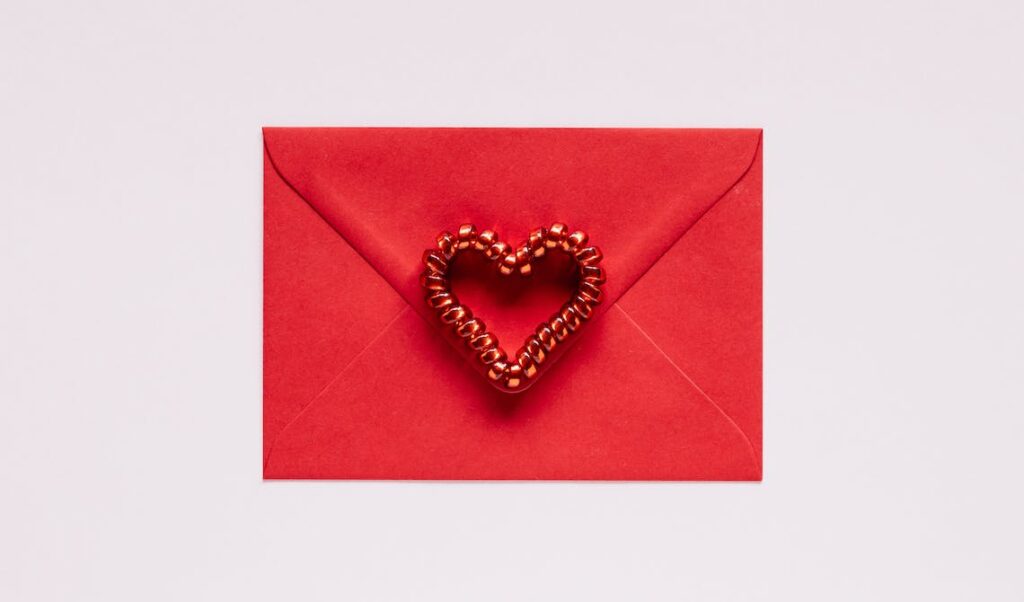
Mini envelopes can hold small folded and flat cards, such as small greeting cards, business cards, and gift cards. Available sizes include:
- #63 mini (2.50in x 4.25in)
- #17 envelope (2.6875in x 3.6875in)
- 3.0in x 4.5in
Lined Envelopes
Lined envelopes are a great way to create a polished, professional appearance and add color to invitations, greeting cards, and corporate correspondence.
Sizes for lined envelopes vary, but some of the common ones include:
- 4.5in x 6.0in
- 4.75in x 7.5in
- 5.25in x 7.25in
- 5.625in x 7.875in
- 6.5in x 9.0in
- 6.00in x 6.75in
- 6.75in x 9.50in
Vertical Square Flap Envelopes
A vertical square flap envelope is a multipurpose envelope you can use for social and announcement functions and for sharing photos with family and friends. These envelopes measure 5.25in x 7.25in.
Thumb Cut Envelopes
Thumb cut envelopes are a variation of policy envelopes without a flap and are open along the short side.
This open end allows for quick access to the contents inside. The semi-circle cuts along the top of the envelope will enable you to grasp the document’s edges.
Thumb cut envelopes have the following sizes:
- 4.125in x 9.500in
- 6in x 9in
Expansion Envelopes
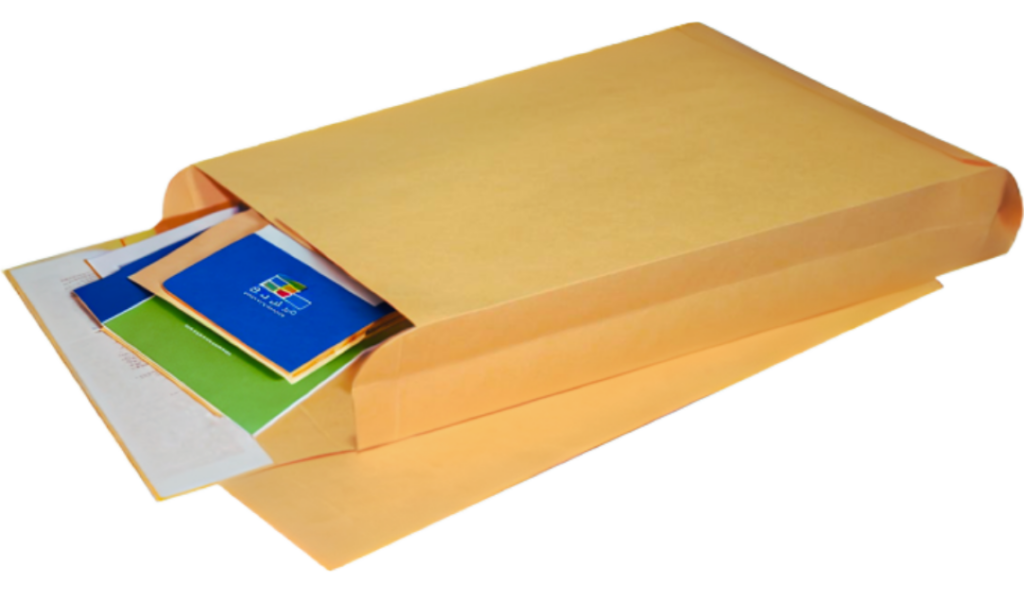
Expansion envelopes have an accordion-style side panel that allows the envelope to expand anywhere from one to four inches to accommodate your documents.
Available sizes for expansion envelopes are as follows:
- 10in x 13in x 2in
- 10in x 15in x 2in
Plain White or Manila Envelopes
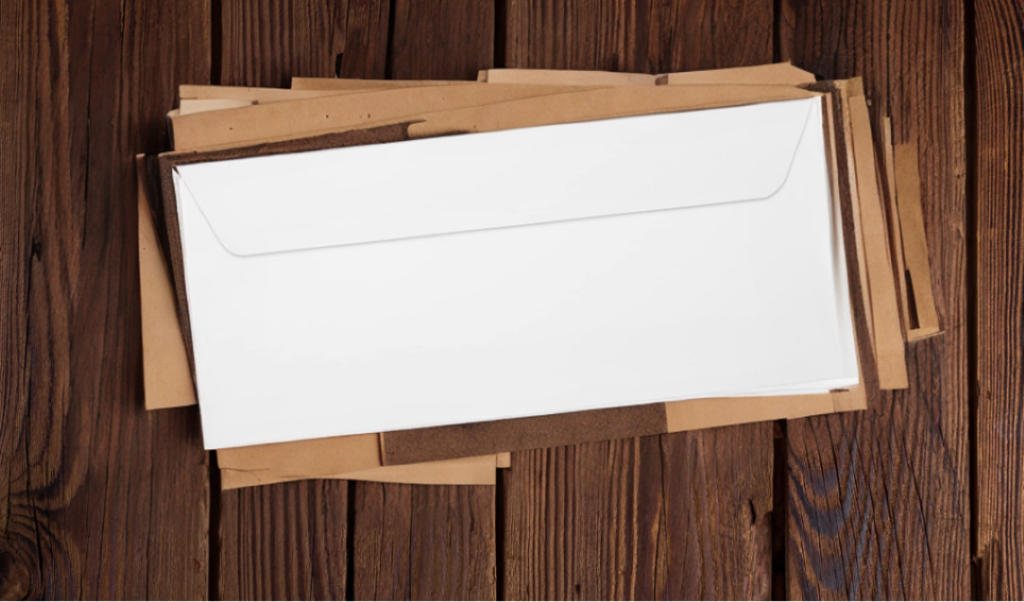
Plain white or manila envelopes are great for sending letters, bills, greeting cards, and other documents.
The common envelope size for manila and regular envelopes is 4.125in x 9.500in.
Padded Envelopes

These mailing envelopes have a cushioned lining to provide some degree of protection for the contents, such as small and fragile items.
The United States Postal Service (USPS) provides padded envelopes for its Priority Mail Express service. This envelope measures 12.5in x 9.5in.
Envelope Size Table for A-Series
The A-series envelopes are popular among businesses and individuals and conform to the internationally recognized ISO 216 standard.
ISO 216, established by the International Organization for Standardization (ISO), specifies the trimmed sizes of writing paper and specific classes of printed matter. As of July 2023, ISO 216:2007 is the most current version of the standard.
The following table shows the different A-series envelope types and their corresponding sizes:
| Envelope type | Envelope width x height (inches) |
| A0 | 33.1 x 46.8 |
| A1 | 23.4 x 33.1 |
| A2 | 16.5 x 23.4 |
| A3 | 11.7 x 16.5 |
| A4 | 8.3 x 11.7 |
| A5 | 5.8 x 8.3 |
| A6 | 4.1 x 5.8 |
| A7 | 2.9 x 4.1 |
| A8 | 2.0 x 2.9 |
| A9 | 1.5 x 2.0 |
| A10 | 1.0 x 1.5 |
What Size Is an A4 Envelope?
Based on the table above, an A4 envelope measures 8.3in in width and 11.7in in height.
You can fold an A4-sized paper in half, and it will fit snugly into an A5 envelope. If you prefer not to fold the paper, use an A4 envelope instead.
International Letter Size Envelopes
When you send mail outside the U.S., USPS recommends using letter-size mail, which is rectangular and must meet the following dimensions:
- Not less than 5.500in long, 3.500in high, or 0.007in thick
- Not more than 11.500in long, 6.125in high, or 0.250in thick
What Is the Standard Envelope Size?
When you think of a standard envelope, it often pertains to a #10 commercial envelope. This envelope is among the most popular business envelope sizes and is used for direct mail (unsolicited advertising) and transactional mail (mail responding to specific actions).
A #10 envelope measures 9.500in x 4.125in, making it ideal for mailing correspondence written on an A4 or 8.5in x 11in printer paper. You can fold the document into thirds to fit neatly inside the envelope.
The Different Types of Envelopes
Envelopes come in different sizes and types and often serve different mailing needs.
For example, window envelopes are often used for bill payments since these envelopes have a window that can display the mailing address. This feature helps save time having to write the address.
One of the most popular envelope types in the U.S. is the banker envelope. It has triangular flaps and is popular among business and personal users.
If you must send out wedding invitations, consider using announcement envelopes. You can also use these envelopes to send small booklets, greeting cards, and brochures.
Pocket envelopes are smaller than many other envelope types. Should you need to send coupons, mail receipts, photos, and other items that don’t take up much space, consider using pocket envelopes.
Businesses with mailing machines can use wallet envelopes as these envelopes have straight flaps allowing automatic materials insertion. Mailing machines prepare mail for sending by addressing, weighing, and stamping. Many direct mail pieces often use wallet envelopes.
If you need to send annual reports, you can use a specialty envelope for those documents.
Do you need to send fancy invitations? Try using square envelopes.
If you have booklets or brochures to send, consider using booklet envelopes. You can also use a large-sized booklet envelope to send documents without folding them.
Catalog envelopes are another popular type among businesses that send catalogs, magazines, insurance policies, and reports. If you’re a job seeker, you can use these envelopes to send your resume to companies.
References
- Envelope Statistics
https://www.envelope.org/envelope-statistics/ - A Customer’s Guide to Mailing (page 13)
https://www.prc.gov/sites/default/files/archived/DMM100.2.pdf - Priority Mail Express Padded Flat Rate Envelope
https://store.usps.com/store/product/shipping-supplies/priority-mail-express-padded-flat-rate-envelope-P_EP13PE - ISO 216:2007
https://www.iso.org/standard/36631.html - 240 First-Class Mail International
https://pe.usps.com/text/imm/immc2_016.htm